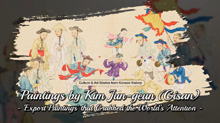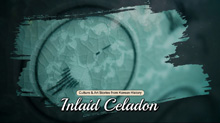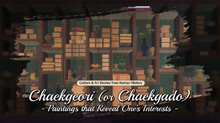The Story of Culture and Arts
- Image resource of Korean history
- Documents from History TextBooks
- Culture & Art Stories from Korean History
- Culture & Art Stories from Korean History - Korean
- National Institute of Korean History
- History net
- About the site
- Introduce
-
Numerous topics related to Korean culture and art are mentioned in middle and high school national history textbooks, but most of them are briefly described by era, making it difficult to understand their concepts, transition processes, and characteristics.
<Culture & Art Stories from Korean History> produces and provides video materials based on expert commentary on the flow, change process, characteristics and characteristics of each major topic in the field of culture and art in Korean history.

Scenario
1894, Germany. Korea’s first painting exhibition opened at the Hamburg Museum für Völkerkunde. The painter was Kim Jun-geun, also known as “Gisan.” Today, around 1,500 paintings of various everyday scenes of Joseon Korea can be found in museums in Europe, the U.S. and beyond. How did one man produce so many paintings? And how did these works make their way into museums around the globe? “How did Kim Jun-geun’s paintings traverse the world?”
An Introduction to Everyday Life during the Joseon-period, Gisan Genre Paintings
In the late 19th century, Korea opened its doors and signed treaties with Western powers. The most active areas of cultural exchange were port cities.Westerners wanted to buy these genre paintings to commemorate their trips to Korea as well as to better understand this unknown land. The painter who responded quickest to these demands was Kim Jun-geun.
The most notable feature of Kim’s paintings was that they were called “Korean export genre paintings.” Because many were created near ports, they were also called “open-port genre paintings.”
China and Japan were producing export paintings for Westerners by as early as the 18th century.
After Korea opened up in the 19th century, it too began producing export genre paintings. Kim Jun-geun is an unknown individual to Koreans. There are no Korean records of him. He only appears in Western historical records.
“The Korean plates are faithful copies of part of a series of colored pictures made by Ki San, an artist in the little Korean village of Tcho-ryang, back of Fusan” - Stewart Culin, Korean Games, 1895
“The native sketches were executed for me by a Korean gentleman, and are, I think, interesting as illustrations of the manners and customs of the country.” - A.E.J. Cavendish, Korea and the Sacred White Mountain: Being a Brief Account of a Journey in Korea in 1891, 1894
Korea’s leading genre painter of the late Joseon period was Kim Hongdo, also known as Danwon. Kim Jun-geun was heavily influenced by him. It’s apparent when comparing their paintings of the same subject matter, such as wrestling matches, schools, and laundry spots.
But despite the similar subject matter, there is a clear difference between their paintings. In Kim Hongdo’s A Village School, we see a student paddled by his teacher while the other pupils stifle their laughter. The painting captures an amusing scene of everyday life. But looking at Kim Jun-geun’s A School Teacher, the writing teacher is void of emotion.
That emotionless face can be found everywhere: on field workers, children playing, and even criminals under torture.
It is a stark contrast from other 18th-century genre paintings that display a multitude of emotions. This was likely because Kim Jun-geun painted for Westerners for export purposes. The paintings were made with a focus on understanding the subjects, not artistry. Kim Jun-geun’s close relationship with Westerners can be seen in the images from the Korean edition of The Pilgrim’s Progress.
Kim Jun-geun did the illustrations for the Korean translation of the Christian novel The Pilgrim’s Progress at the request of a Western missionary. Large foreheads, long, narrow eyes, hooked noses, women with their hair in a bun … Despite being a Western novel, the illustrations' subjects were clearly Korean. And what was the result? The book was immensely popular among Koreans and one of the best-selling novels of its time.
There are currently 1,500 known extant Kim Jun-geun genre paintings, and they are still being discovered. Some suspect the reason so many paintings exist is because Kim had help from multiple people. The fact these paintings were sold simultaneously at Wonsan, Busan, and Jemulpo ports in the late 19th century supports this claim.
Not only that, the biggest difference between other genre paintings and Kim Jun-geun’s was the subject matter. Painted scenes of funerals, memorial services, and punishments were unknown before Kim Jun-geun’s paintings. These scenes were not painted for purely appreciative or decorative purposes.
Depictions of shamans, who were socially shunned at the time, were among the subjects. Blind fortune tellers, a shaman holding a fan and bells while performing an exorcism, and a begging Buddhist monk when Buddhism was oppressed in Joseon society - Images of the socially disadvantaged, not commonly seen in other paintings, were on full display.
Besides them, also officials dressed according to their station and ritual, and women in outfits according to their age and status. All of these were important records of Korean folk culture to Westerners.
Kim Jun-geun’s works dealt with a variety of subject matters—work and play, punishment, religious life, and even the food, clothing, and homes of the people. Due to this, we can confirm that Kim Jun-geun’s paintings were made for export purposes to help others understand Joseon customs.
When Korea had just opened its doors and began cultural exchanges with the West, it was Gisan genre paintings that served as a manual for Joseon-period customs to curious foreigners.
-------------------------------------
Advisor: Yu Jaebin
Script/Storyboard: Lee Na-kyeong
Editor: Kim Sujin, Myung Jaerim, Seo Myungwon
Narrator: Mary Katherine Chadwick
Filming: Yoon Jongwon
General Editing: Park Injoon, Lee Seungsin
Illustrations: Kim Jongseok, Shim Hui-young
Recording/Music: Jo Donghyo
Logo: Min Seung-ook
Materials/Resources: National Museum of Korea, Incheon Open Port Museum, Seoul Museum of History, Chunggyecheon Museum, The Academy of Korean Studies, Yonsei University Library
English Translation & Editing: Mary Katherine Chadwick, Daniel Kane, Lee Jaeyeol
Production Manager: Yoon Jongwon, Kim Kiwon
Administration : Kim Sanghee
Director: Yoon Jongwon
Life & Folklore
22 films-
 Paintings by Kim Jun-geun(Gisan)05:15
Paintings by Kim Jun-geun(Gisan)05:15 -
 Moon Jars03:56
Moon Jars03:56 -
 Inlaid Celadon04:13
Inlaid Celadon04:13 -
 Chaekgeori (or Chaekgado)04:38
Chaekgeori (or Chaekgado)04:38 -
 Earthenware08:28
Earthenware08:28 -
 Taenghwa, or Buddhist Paintings in the Joseon Period08:36
Taenghwa, or Buddhist Paintings in the Joseon Period08:36 -
 Lacquerware09:04
Lacquerware09:04 -
 Dyeing and Weaving08:21
Dyeing and Weaving08:21 -
 Royal Seal, Eobo07:53
Royal Seal, Eobo07:53 -
 Folk paintings07:49
Folk paintings07:49 -
 Korean Genre Paintings10:05
Korean Genre Paintings10:05 -
 Paintings of the Procession of the Joseon Tongsinsa10:09
Paintings of the Procession of the Joseon Tongsinsa10:09 -
 Dongjong, Bronze Bells of Korea08:50
Dongjong, Bronze Bells of Korea08:50 -
 Calligraphy08:32
Calligraphy08:32 -
 White Porcelain08:18
White Porcelain08:18 -
 Buncheong Ware07:48
Buncheong Ware07:48 -
 Goryeo Celadon07:54
Goryeo Celadon07:54 -
 Buddhist Paintings of the Goryeo Dynasty07:57
Buddhist Paintings of the Goryeo Dynasty07:57 -
 Clay Figures, Figurines07:01
Clay Figures, Figurines07:01 -
 Clay Earthenware06:05
Clay Earthenware06:05 -
 Paintings of the Joseon Dynasty08:09
Paintings of the Joseon Dynasty08:09 -
 Statues of the Buddha in Korea09:03
Statues of the Buddha in Korea09:03

